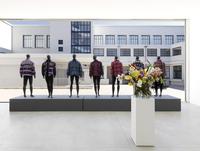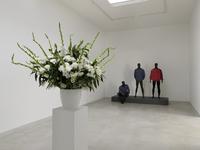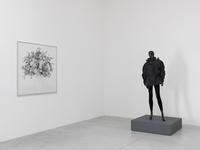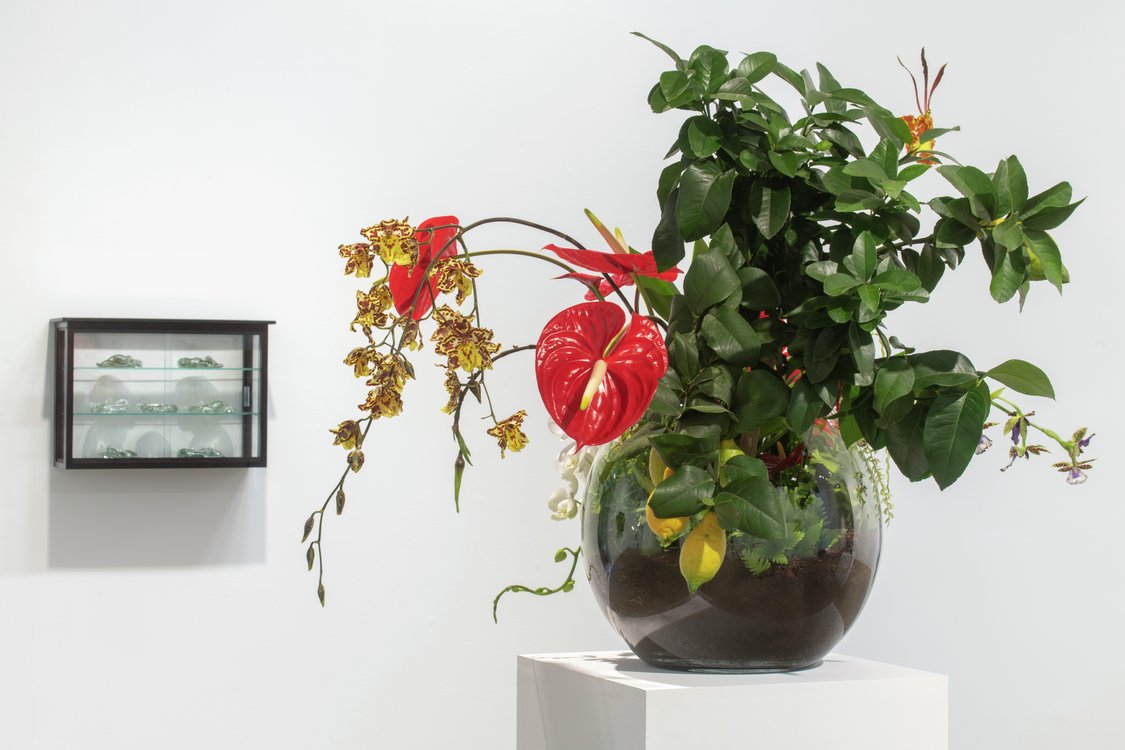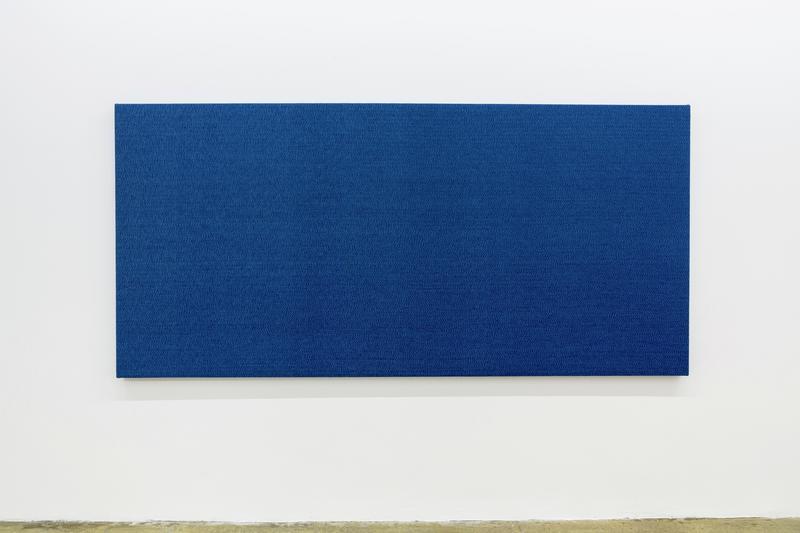This project at the Consortium is part of a series of three exhibitions, each focused on a specific aspect of Willem de Rooij's work over the last ten years. The first two parts were presented at the Arnolfini Contemporary Art Center in Bristol (November 2014), bringing together collages made in 1999. Then at the Petzel Gallery in New York (April 2015), around a set of abstract tapestries. The summary of these exhibitions will be presented at the MMK-Museum für Moderne Kunst in Frankfurt in 2016 and will be the subject of a book published by König, London and Les presses du Réel, Dijon.
Since its beginnings in the 1990s, Willem de Rooij's work has been involved in the production of boundary objects that involve worlds, heterogeneous factories, relationships of exchange and conflicts. His work refers to different states of production, material or conceptual, abstract or concrete, to intermediate spaces of representation which renew the question of images, their use and their singularity.
Willem de Rooij belongs to this generation which has gone through the end of a system (none is eternal), the terminal phase of capitalism, its structural crisis; which saw the endless accumulation of production goods, the exhaustion of old relations of force and distribution; who learned some lessons from it: a way of putting an end to the dialectic of neo and post, of exploring different possibilities of narration and appropriation; and to thus see how more complex networks of information are created, in which condensed or contracted forms can be produced (a weaving, a bouquet of flowers, a photograph, a film), which cannot be deciphered, named or govern by the sole play of causalities, references and meanings.
With Willem de Rooij, “There is One”, as the other said. Let us understand here the One-all-alone, which challenges the relationship, the dialectic of the subject. The Bouquets series, initiated in 2002, is literally based on this logic of differentiation and isolation. Each flower is the unique representative of a species, which neither repeats nor unites. The three “Bouquets” exhibited at the Consortium form nodes, structures made of these unleashed units.
But there is also and inevitably the Other, an otherness constantly present from the beginning, as in his collaboration with Jeroen de Rijke (died in 2006) and in most of his installations, which involve other artists or craftsmen, works or artifacts from historical or anthropological sources, temporary associations that produce a reading on several levels.
Thus the gigantic installation designed specifically for Le Consortium, made up of fifty mannequins and the collection of sportswear designed in the 1980s by the Sino-Dutch designer Fong Leng, refers to these collective arrangements but also to the undecidable status of each something, both autonomous and connected, where the history of techniques and knowledge is juxtaposed, joining the hypothesis of the representation of a human group, of a family without kinship.
Fong Leng's creations have played a central role in Willem de Rooij's work since 2006, as in his staging at the Chantal Crousel gallery of haute couture pieces from the 1970s. The theatricality of these costumes contrasts with the style of this more standardized production, crossed by the paradoxical ideal of ephemeral beauty and the developments of the globalized fashion industry. Between rarity and consumption, from adornment to ready-to-wear, we perceive a whole contemporary history of work, labor, value and authenticity, as well as the two apparent sides of the same market for bodies and objects, unique and multiple.
From one to the other, there is no relationship, harmony, nor program, but the evidence of an original conflict, the impossible of a symbolic, ordered and meaningful articulation. ––Stéphanie Moisdon
更多